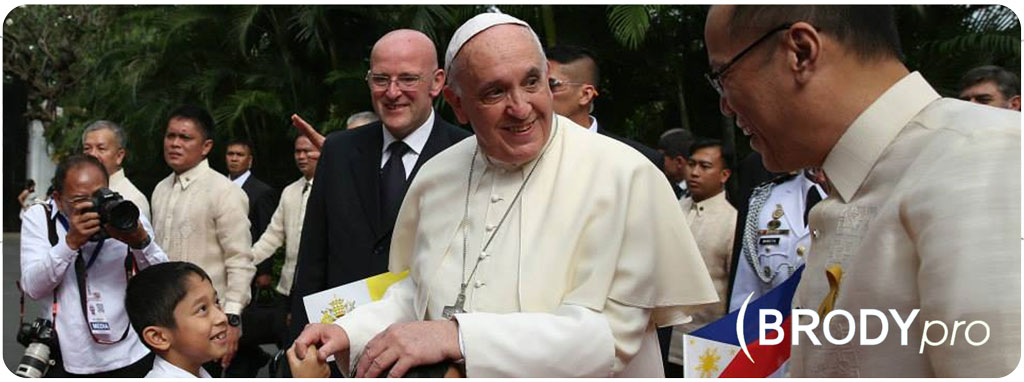Whether our office (and title) resides on the C level or not, influencing is an integral part of our daily lives and our careers.
No matter what your title or circumstance, it can be challenging to influence those around you; especially when working across cultures and on global teams.
How do we influence across different cultures? We thought Pope Francis was the perfect example to illustrate strong intercultural influence skills.
In October 2015, Pope Francis visited the U.S. for the first time and was welcomed with fanfare more often associated with a rock star than the leader of the Catholic Church. It was clear by the throngs that showed up in New York, Philadelphia and Washington, DC that the pontiff is adored by Catholics and non-Catholics alike.
How does his influence cross the religious and cultural divide?
During his tour of the Northeast, the Pope often asked security to bring children from the crowd to him, or requested that his driver stop the car so he could visit with those who had waited. While Pope Francis holds the highest position in the Catholic Church, he is also very relatable. Many in his position would ride in a limo or a dark SUV, but Francis decided on a small Fiat. He has been recognized for deliberately choosing simpler clothes than those that came before him including the everyday black shoes that conflict with his otherwise all white garb.
What can we learn from his actions?
Connection: Pope Francis is likable and he goes out of his way for others. We all want to talk to—and work with—people we like. Develop your likeability by going out of your way to listen to people, ask their opinions, and be interested in them.
Clarity: Pope Francis positions himself as an agent of change at a time when the world is in desperate need of one. He is clear about his values and goals: hope, healing, peace, and justice. When seeking to influence others, are you clear about your goals and how they can positively impact everyone involved?
Communication: It is clear that the Pope considers his words carefully and crafts his message for his audience. This skill is illustrated by the following excerpt from the Pope’s speech to the U.S. Congress in 2015: “…we must especially guard against: the simplistic reductionism which sees only good or evil; or, if you will, the righteous and sinners. The contemporary world, with its open wounds which affect so many of our brothers and sisters, demands that we confront every form of polarization which would divide it into these two camps… We must move forward together, as one, in a renewed spirit of fraternity and solidarity, cooperating generously for the common good.” When communicating, are you appealing to both head and heart? Is your message both clear and compelling?
Pope Francis is able to communicate and influence across cultures by creating connections, having clarity about his goals and his audience, and communicating a compelling message. Does your team need to enhance their influence skills? Check out BRODY’s Influence Without Authority training here.
